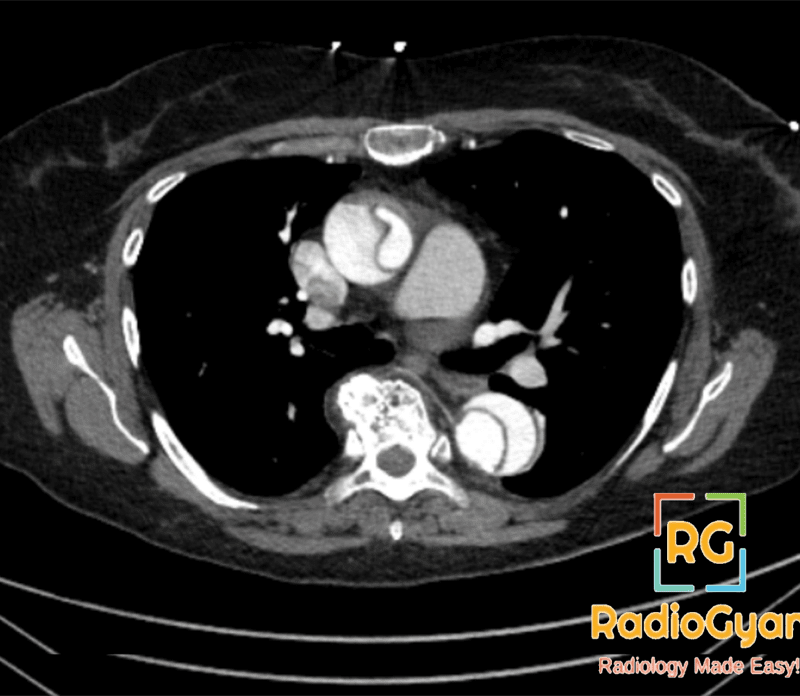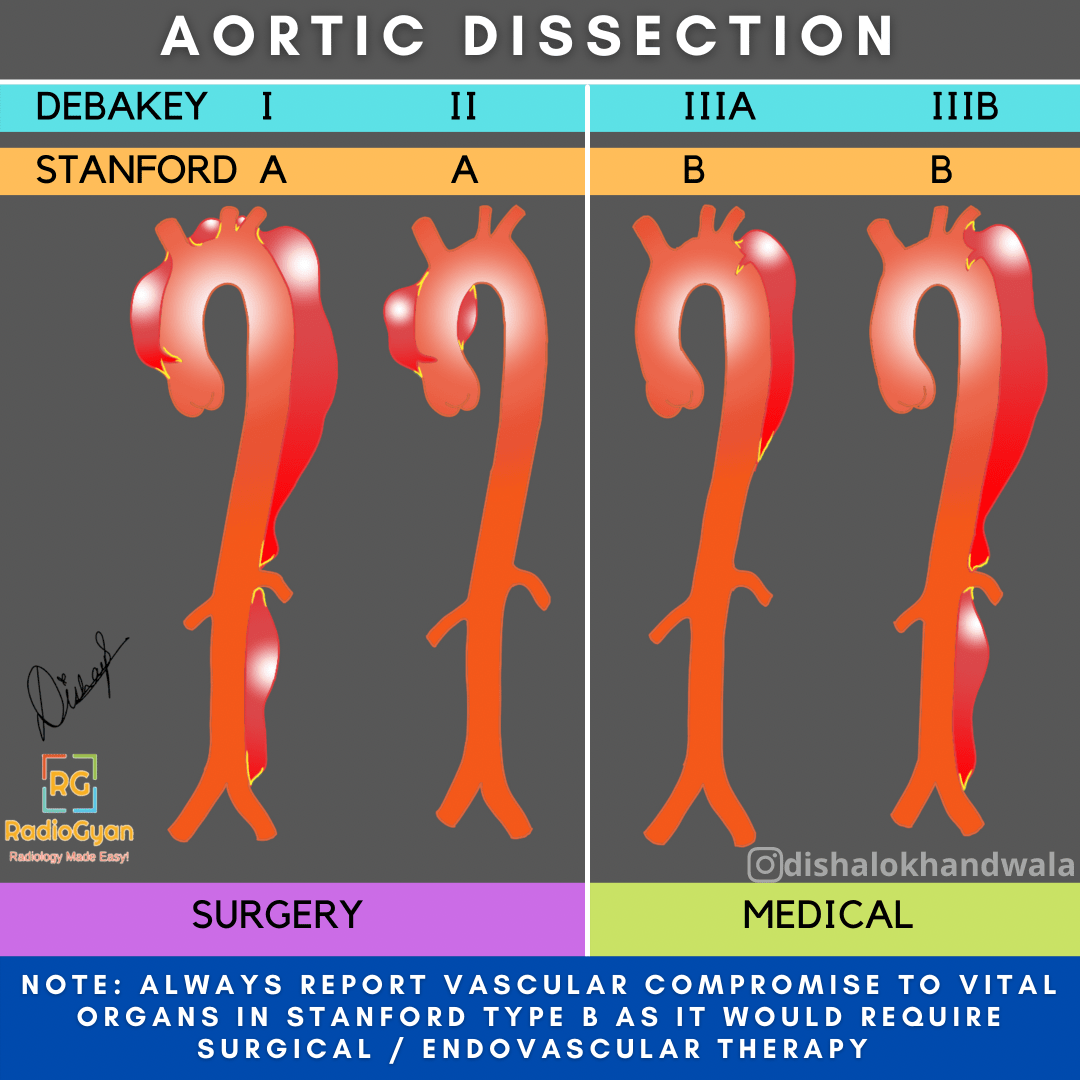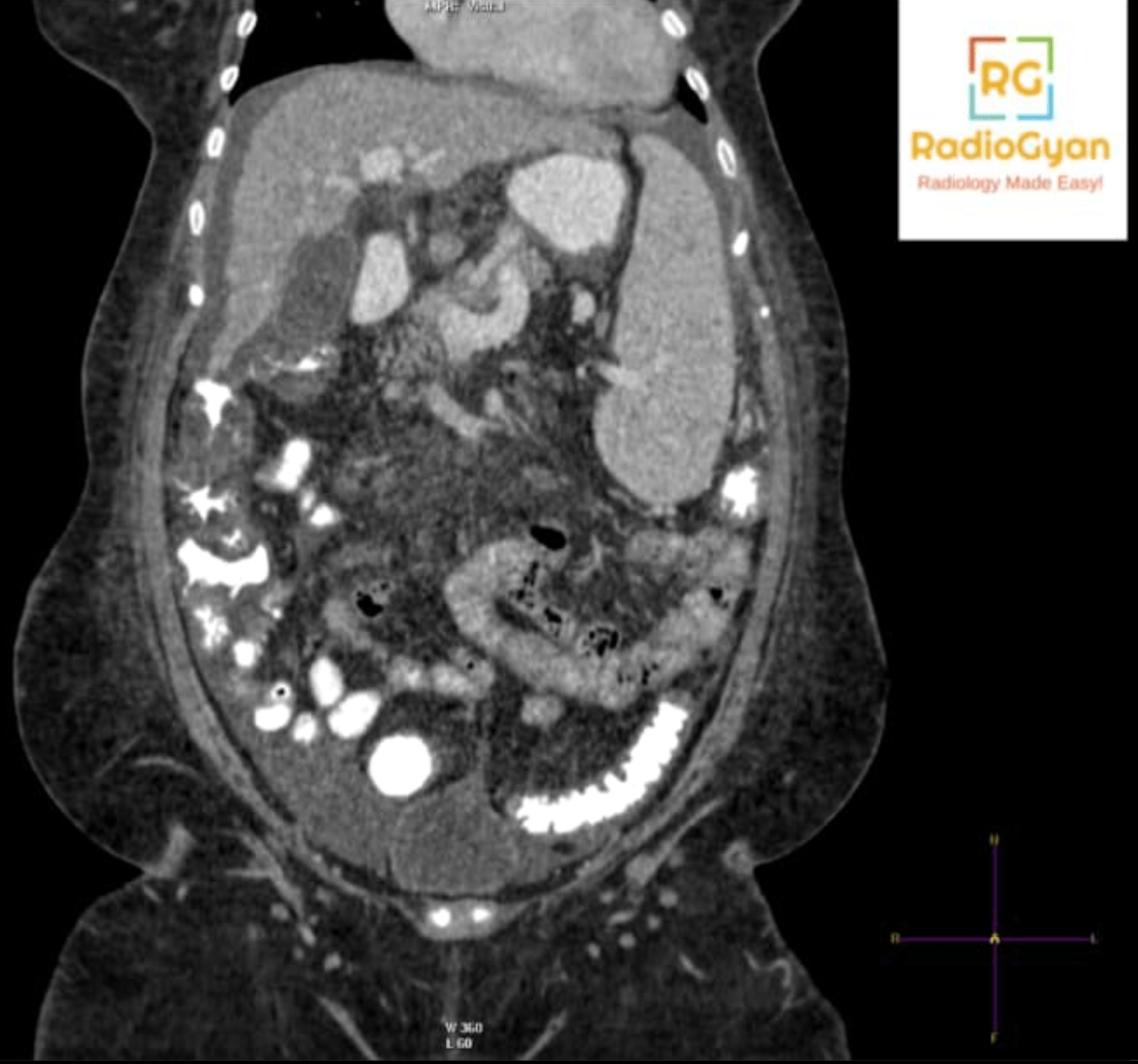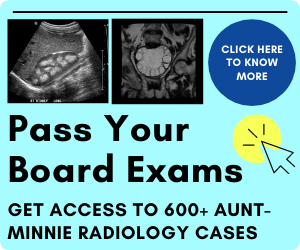
Quiz
Identify the type of aortic dissection
- Stanford Type A
- Stanford Type B
- Stanford Type C
True v/s False Lumen of Aortic Dissection
- Intimal defect – blood enters media of aortic wall – “dissects” the aortic wall longitudinally.
- Two lumens separated by dissection flap: True lumen and False lumen – formed because of the dissection flap.
| True Lumen | False Lumen | |
|---|---|---|
| Size | Usually smaller (compressed by false lumen) | Usually larger due to higher pressure and lesser resistance |
| Shape | Round | Cresenteric |
| Contrast density | Similar to other arteries | Less dense contrast due to delayed opacification. |
| Thrombosis | Less likely | Common |
| Configuration | No beak or cobweb sign | Beak Sign. Cobweb sign |
Beak sign of false lumen: Acute angle commonly formed by the false lumen against the true lumen.


Cobweb sign of false lumen: Fine strands of dissected media tissue forming a web cluster.
Mercedes Benz Sign : Triple channel dissection due to secondary dissection within one channel
- Widening of superior mediastinum > 8cm and progressive aortic enlargement on radiographs.
- CT is imaging modality of choice in acute cases. MRA is good for follow up.
Key is to report what portion of the aorta is involved.
Ascending aorta : Stanford A – Acute worrisome – Acute management (Surgical).
Beyond ascending aorta – Stanford B – Be calm (Conservative management).
Classification systems for Aortic Dissection
Stanford classification
Type A (60%): Involves ascending aorta, regardless of site of origin
Type B (40%): Does not involve ascending aorta
DeBakey classification
Type I: Originates in ascending aorta, involves at least aortic arch, and may involve descending aorta
Type II: Originates in and confined to ascending aorta
Type III: Originates in descending aorta; IIIa: Limited to descending aorta; IIIb: Extends below diaphragm

Analysis and reporting algorithm for diagnostic CT findings
Remember the mnemonic : DISSECTION –
Dissection or other acute aortic syndrome: Yes/No?
Is ascending aorta involved: Yes/No?
Intimal tear location
Size of the true and false lumen.
Segment(s) of aorta involved
Extent and involvement of aortic branches.
Complications –
Thrombus in the false lumen
Inspect False/True lumen
Other factors to consider : Trauma, age sex
Notify the provider
Management
- Type A: Surgery due to involvement of aortic root
- Type B: Conservative treatment and Surgery in complicated cases (organ ischemia, rupture, descending aorta > 6cm,hemodynamic instability.)
- Mesenteric, renal, extremity ischemia
- Rupture, aneurysmal enlargement of false lumen; descending aorta > 6 cm
- Hemodynamic instability; pseudocoarctation syndrome; distal embolization.
Access the above case as a full DICOM image set (includes report impression): Aortic Dissection full DICOM set






It’s good to see writing that is so good that you know the writer has done the homework on the subject. I am impressed with your insight and viewpoints on this topic.
Glad you liked the post, Terrance.